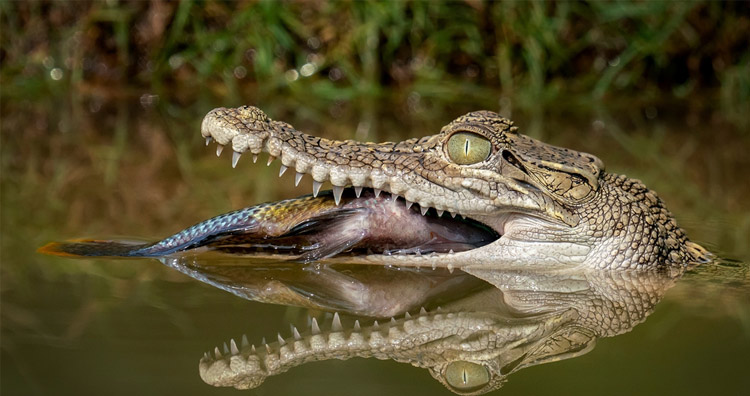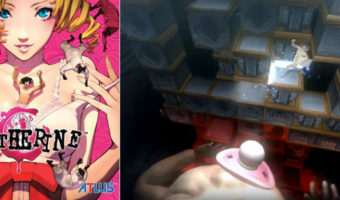Why Do Crocodile Shed Tears? Here’s What Scientists Say
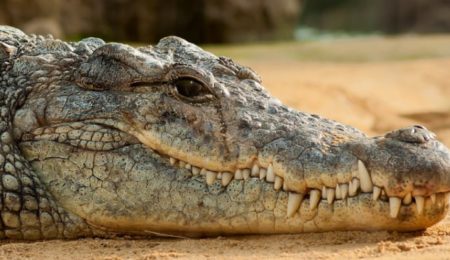
When someone fakes being sad or shows dishonest remorse, they are said to be shedding “crocodile tears.” The idiom is often associated with the phony display of emotions like regret, sorrow, and empathy. While people consider the saying to be a metaphor only, crocodiles, caimans, alligators, and gharials actually shed tears while devouring their prey. But why do crocodiles shed tears at all?
Yes, the expression has a biological significance! It is backed by research to find out the truth behind “crocodile tears.” However, in the early 18th century, Johann Jakob, a Swiss physician and naturalist, declared that the common belief crocodiles shed tears while they eat is incorrect. In 1927, a scientist, George Johnson, rubbed a crocodile’s eyes with onions and salt to check if they were crying. When they did not, Johnson concluded that the popular notion of crocodile tears is a myth.
However, many years later, in 2006, D Malcolm Shaner, a neurologist, and Kent A Violet, a zoologist, finally filmed five out of the seven crocodile family members (alligators and caimans) shedding tears as they eat food.
Table of Contents
Do crocodiles shed tears because they feel sorry for their prey?
Crocodiles shed tears while eating their prey. However, they are not tears of remorse or regret. That’s what led to the origination of the “crocodile tears” saying. But if crocodiles aren’t sad while eating their prey, why do they cry?
The popular myth says crocodiles cry when they devour humans. In contrast, the real truth is far from it. The crocodiles hiss and huff a lot while feeding, which forces air through their sinuses. This causes the tear film (a thin layer that holds the tears in place) in crocodiles’ eyes to get disgorged from the tear duct. The tear film surrounds the outer surface of the crocodile’s eye and prevents the natural evaporation of tears to keep the eyes moist. It is the result of a disgorged film that causes the crocodile’s tears to flow down while devouring its prey.
The researchers also noticed bubbling and frothing in some of the crocodiles’ eyes as they munched away on their food. This is also a result of the reaction of tears with substances like proteins. Moreover, a crocodile’s tear film is exceptionally efficient compared to that of a human being. The reason behind it is the excessive number of proteins, mucus, and electrolytes. Therefore, a crocodile can go without blinking for as much as two hours, while the average human blinks around 15 times a minute to keep their eyes moist.
Another interesting thing about crocodile tears is that it’s a rich source of nutrition for some creatures. That’s right! Insects like butterflies and bees are recorded feasting on crocodile tears to acquire minerals.
How did the crocodile tears saying come into existence?
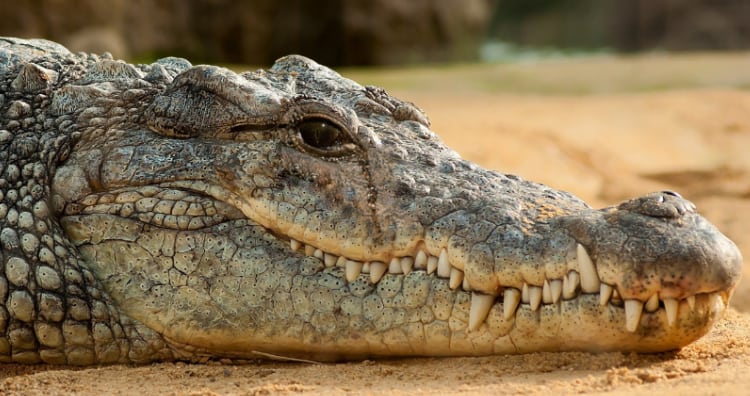
The first print reference to crocodile weeping can be traced back to the travel memoir of Sir John Mandeville, which was first circulated in 1357. He wrote, “In that contre … ben great plenty of Cokadrilles … Theise Serpentes seen men, and thei eten hem wepynge.” This means, “There are many crocodiles in that country; these serpents slay men and eat them weeping.”
However, the early figurative mention of crocodile tears is credited to Edmund Grindal (Archbishop of York and Canterbury). In 1563, he wrote, “I begin to fear, lest his humility … be a counterfeit humility, and his tears crocodile tears.” The same was republished in 1711 in Strype’s Life of Grindal.
Shakespeare also referred to crocodile tears in many of his plays, including Othello (1603). In Act 4, Scene 1, Othello discredits Desdemona’s weeping-
“If that the earth could teem with woman’s tears, / Each drop she falls would prove a crocodile.”
The following animal sayings are also not just figurative!
Interestingly, “crocodile tears” is not the only idiom with biological significance. These animal idioms also have a rational explanation behind their origination.
1 Monkey see, monkey do.
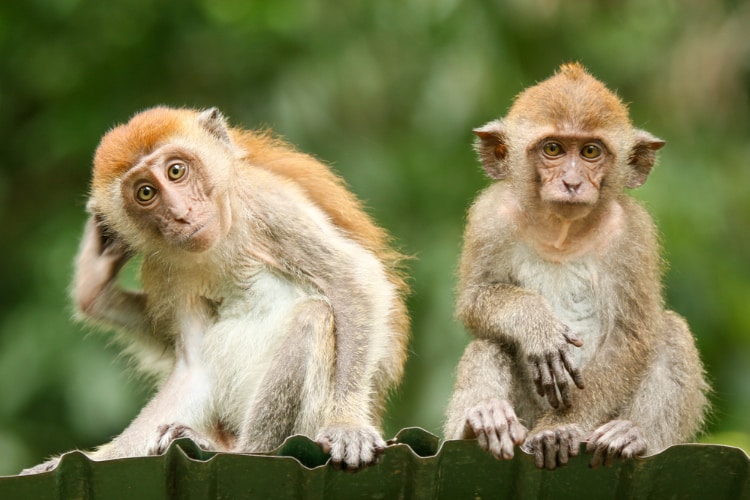
“Monkey see, monkey do” is a popular phrase people use when they want to emphasize one’s tendency to imitate something someone else is doing. The phrase is more commonly used in the context of children as they tend to copy their parents or siblings. The Dictionary of Catch Phrases by Eric Patridge (a New Zealand/British lexicographer) says the phrase to be originated in the 1920s.
However, per the 2006 journal published by Pier F Ferrari on Rhesus Macaques, monkeys display tendencies to imitate human actions for real. Various experiments concluded that the monkeys could imitate human facial gestures like mouth opening, lip smacking, hand opening, tongue protrusion, etc. Not just macaques but apes can also imitate certain human actions.
2 To make a beeline for…
“To make a beeline for…” means directly going towards something following the shortest path. The phrase was first used in a newspaper in the early 1800s, where they addressed the returning of a horse to its home after a sleigh accident as making a beeline for home.
This idiom makes sense because a forager bee heads straight to the beehive after finding a source of nectar. The bee then performs a movement called the “waggle dance” to communicate the location of nectar to other bees. The waggle dance involves a short wiggling run following the angle of the direction of the nectar. That is how the bee directs other bees to the nectar, i.e., by making a beeline to it.
3 Look what the cat dragged in.
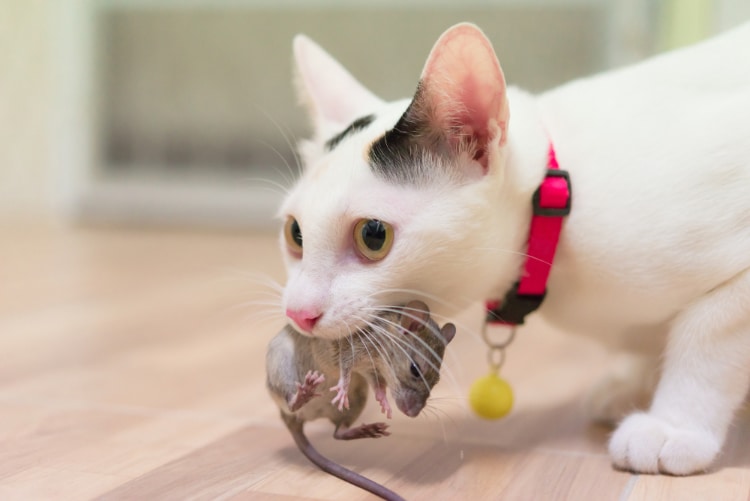
When one says, “Look what the cat dragged in,” they call attention to who has entered a space, like a room or a hall. The idiom is often used sarcastically to imply that the person entering the room is disagreeable.
The original idea behind this saying is the bizarre behavior of pet cats. Cats are natural predators, and they love hunting. Therefore, they take on prey whenever they have a chance, and a lot of times, they will bring their injured prey back home with them. Cats do so to teach their family members, i.e., humans, how to hunt. However, the prey is often covered in blood, dirt, and whatnot, which gives it a disgusting look. Therefore, “Look what the cat dragged in” implies that the person who entered the room is thoroughly unlikeable.
4 Get your ducks in a row.
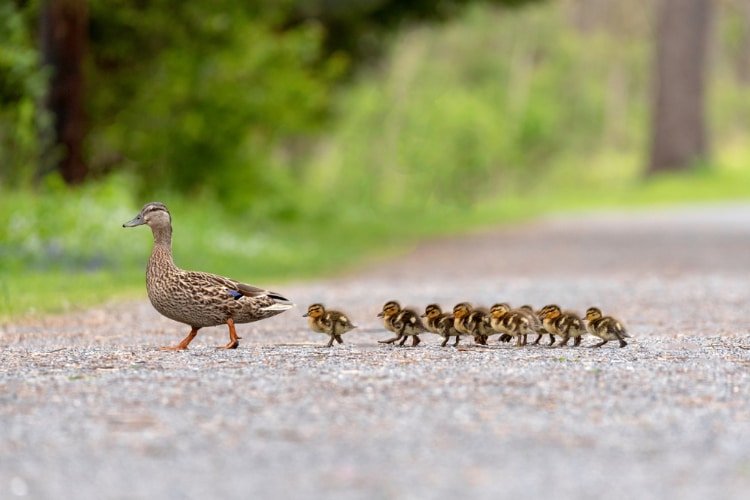
To “get your ducks in a row” means to arrange all the necessary preparations or to get everything organized for something. The earliest mention of this idiom can be traced back to an article in The Plaindealer (15 Nov 1889).
Like many bird species, ducklings also have the ability to identify their mother and siblings on sight. It ensures that the ducklings follow their own mother and do not wander off with another duck mother, i.e., their mother gets her “ducks in a row.” Intriguingly, the ducklings show the tendency to follow anything that moves around them if separated from their mother in the early days of birth.
5 Taking a cat nap…
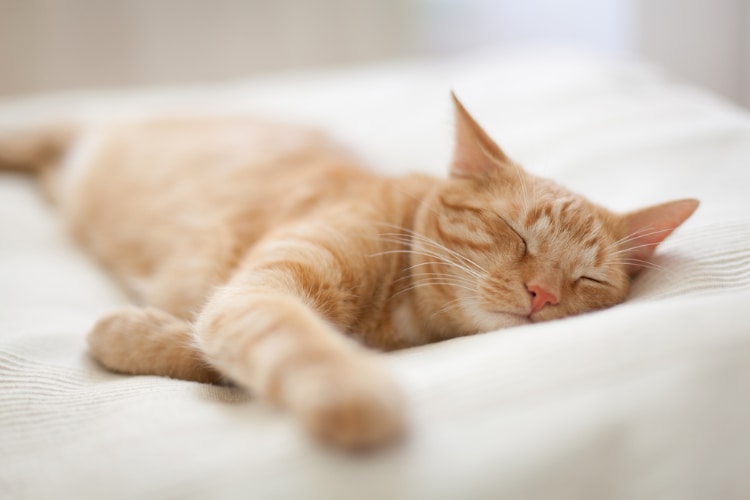
Taking a “cat nap” means dozing off for a short time or taking a light and short sleep. The Son of Tarzan, a 1916 novel by Edgar Rice Burroughs, has the first mention of the phrase.
Cats are great hunters and prefer to save their energy for hunts. Therefore, if you have a cat, you’ll often find them dozing off. In fact, an average cat sleeps for around 15 hours a day! However, the average sleep period of cats can only be 50 to 113 minutes. Moreover, cats sleep more during the day and remain active at night. This is because cats are nocturnal creatures that prefer hunting during the night.
25 Interesting Words Derived from the Names of People Throughout History














